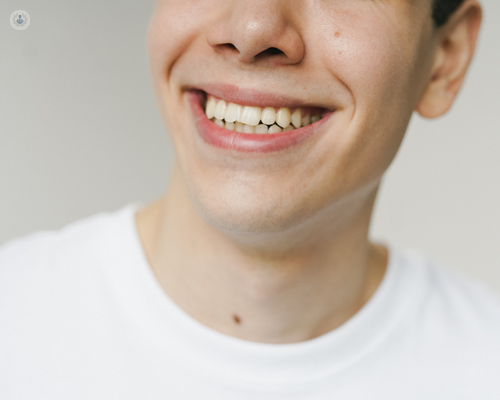Diagnosing and treating salivary gland disorders with Sialendoscopy
Written in association with:Here to tell us all about Sialendoscopy and how it’s a useful diagnostic and treatment tool for patients that experience salivary gland problems, is leading consultant oral and maxillofacial surgeon Miss Katherine George.

What is Sialendoscopy?
Sialendoscopy is a minimally invasive salivary gland procedure using a micro endoscope attached to a light source and a camera. It is used to diagnose and treat disorders of the salivary glands, such as salivary gland stones and duct strictures (narrowing). It can also be used to manage symptoms of pain and swelling related to recurrent gland infections and inflammation.
How does it work?
The micro endoscope is a long thin tube just 1mm in diameter. It is small enough to move through the tiny salivary gland ducts without damaging them. thus, it allows the internal wall of the duct to be examined and photographs to be taken. It also facilitates basket retrieval and stone fragmentation of salivary gland stones, the dilatation (stretching) of salivary gland strictures and biopsy of the duct wall making use of miniaturised instruments to enhance rates of success and maximise patient comfort.
What are the benefits of a Sialendoscopy?
Research shows that Sialendoscopy offers favourable outcomes for the management of salivary gland stones and strictures compared to traditional approaches such as gland removal avoiding the risks of nerve injury and scars. It’s generally considered to be a safe procedure with a low risk of duct wall injury and duct strictures. Gland swelling is a normal part of the procedure but this usually settles within 48 hours. Infections can occur and are more common with stone removal. In these cases, antibiotics may be prescribed in order to reduce the risk.
How is the procedure carried out?
The procedure can often be carried out under a local anaesthetic with a dental injection, avoiding the need to be put to sleep and the associated recovery time. The length of the procedure varies with the treatment aims and individual case but it can be as quick as 20 to 30 minutes.
If you need expert treatment for a salivary gland issue, arrange a consultation with Miss George via her Top Doctors profile.


